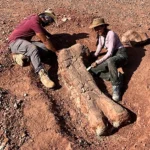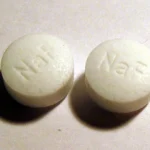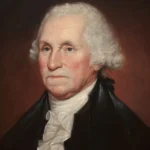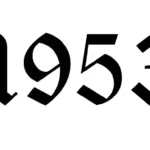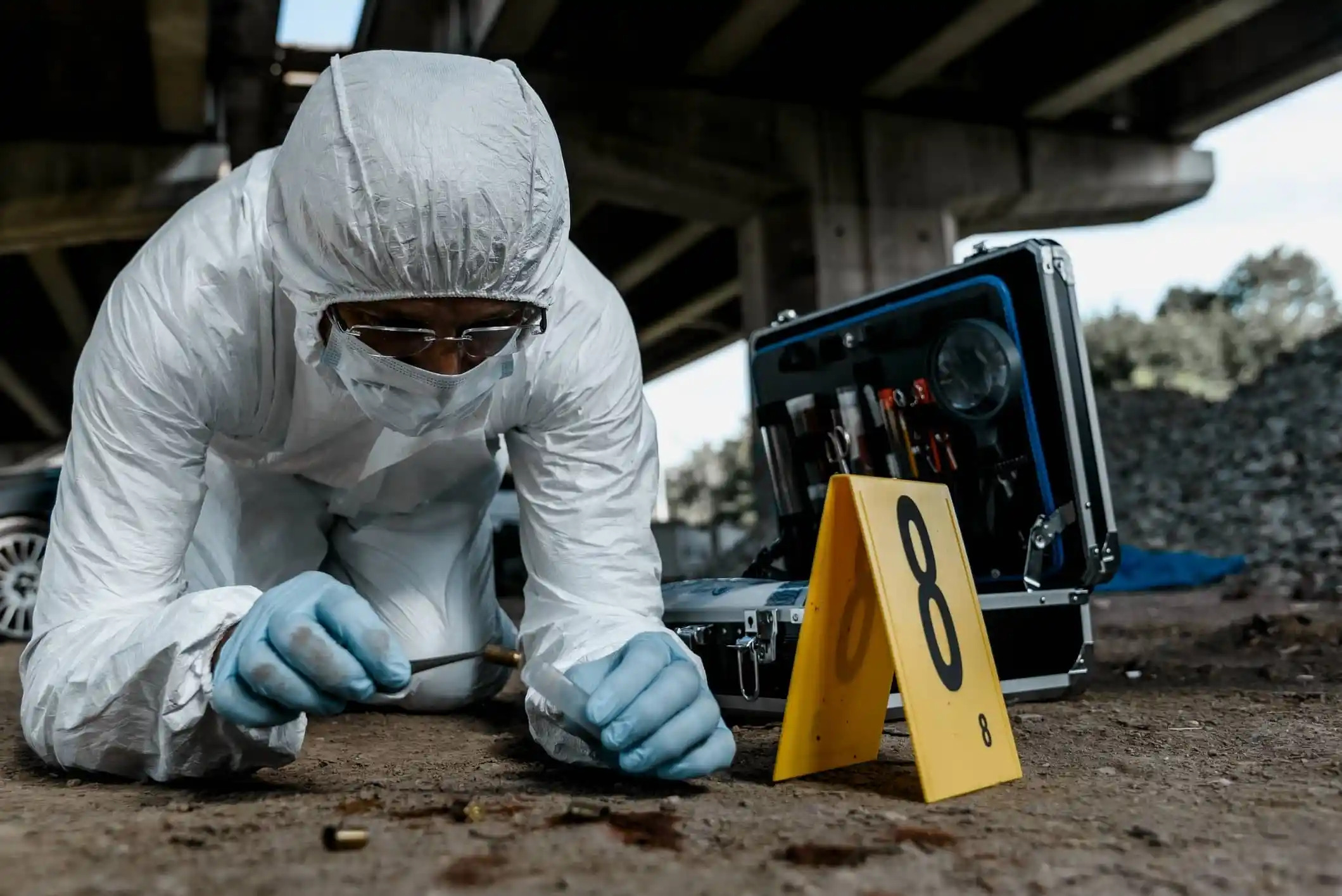
The word “forensic” comes from the Latin word “forensis,” meaning “of the forum,” as in the public forum where legal cases were heard in ancient Rome. Today, the term “forensics” refers to the use of scientific methods to investigate and solve crimes. Forensic science is a multidisciplinary field that incorporates knowledge and techniques from various scientific disciplines, including chemistry, biology, physics, and anthropology. Forensic scientists work to gather, analyze, and interpret evidence from crime scenes in order to reconstruct events and provide unbiased scientific findings in legal proceedings.
The first recorded use of fingerprints for identification purposes was by Sir William Herschel in India in 1858. Herschel had Indian civil servants sign their names on contracts with ink, and then he would have them press their fingertips next to their signatures. He realized that each person’s fingerprints were unique and could be used for identification. Today, fingerprint analysis is a crucial part of forensic investigations and is used to link suspects to crime scenes, identify unknown deceased individuals, and exonerate innocent individuals.
The first recorded use of forensic toxicology was in China in the 9th century, when a man was executed for poisoning his wife with arsenic. The Chinese used the “water test,” which involved giving the accused a drink of water containing a small amount of arsenic. If the person vomited within a certain period of time, they were considered innocent, as the arsenic was thought to have been eliminated from the body. If the person did not vomit or died, they were considered guilty. Today, forensic toxicology plays a critical role in identifying drugs and poisons in the body and linking them to criminal activity.
The first forensic laboratory in the United States was established in 1923 by the Los Angeles Police Department. The lab was headed by August Vollmer, a pioneer in the use of scientific methods in law enforcement. The lab focused on firearms and fingerprint analysis, and its work helped to establish the scientific basis for forensic investigations. Today, forensic laboratories are found in federal, state, and local agencies across the United States and around the world, and they use a wide range of advanced technologies to analyze evidence.
The first modern forensic science book, “The Handbook of Forensic Medicine,” was written by the French physician and chemist Mathieu Orfila in 1813. Orfila is often referred to as the “father of forensic toxicology” for his work on the detection of poisons in the body. His book was the first to describe the use of scientific methods in forensic investigations and was instrumental in establishing the field of forensic science. Today, forensic science has expanded to include many different disciplines, and it plays a crucial role in solving crimes and bringing justice to victims.
The Innocence Project, a non-profit organization that uses DNA evidence to exonerate wrongfully convicted individuals, has helped free over 375 people since it was founded in 1992. The organization was founded by Barry Scheck and Peter Neufeld, two prominent attorneys who were convinced that DNA technology could be used to prove the innocence of people who had been wrongfully convicted. The Innocence Project has used DNA evidence to exonerate people who were serving life sentences or facing the death penalty, and it has helped to shed light on problems with the criminal justice system.
The first recorded use of blood spatter analysis was in the 1890s by a French physician named Dr. Eduard Piotrowski. Piotrowski noticed that blood spatters on the walls of a crime scene could provide valuable information about the sequence of events that occurred. Today, blood spatter analysis is used to determine the type of weapon used, the distance from which the weapon was fired, and the trajectory of the weapon.
The first recorded use of entomology (the study of insects) in a criminal case was in 1855, when a Frenchman named Jean-Pierre Mégnin used insect evidence to solve a murder case. Mégnin discovered that the larvae of blowflies could help determine the time of death of a victim. Today, entomology is used to estimate the time of death and the location of a corpse.
The first recorded use of ballistics (the study of firearms and ammunition) in a criminal case was in 1835, when a man was convicted of murder based on the unique markings on his bullets. Today, ballistics is used to match bullets and cartridge cases found at crime scenes to specific firearms.
The first recorded use of DNA evidence in a criminal case was in 1986, when Alec Jeffreys, a geneticist at the University of Leicester in England, used DNA profiling to solve a double murder case. Jeffreys discovered that DNA could be used to identify individuals with a high degree of accuracy. Today, DNA evidence is used to link suspects to crime scenes and exonerate innocent individuals.
The first recorded use of facial reconstruction (the process of recreating a person’s face based on their skull) in a criminal case was in 1970, when a woman’s remains were found in Scotland. Forensic artist Richard Neave used skull measurements to create a likeness of the victim, and the image was circulated in the media. The victim’s family recognized the likeness and were able to provide important information to the police. Today, facial reconstruction is used to identify unknown deceased individuals.
The first recorded use of forensic odontology (the study of teeth) in a criminal case was in 1897, when a man was convicted of murder based on bite marks found on the victim’s body. Today, forensic odontology is used to identify unknown deceased individuals and link suspects to bite marks at crime scenes.
The first recorded use of forensic anthropology (the study of human bones) in a criminal case was in the 1930s, when American forensic scientist Thomas Dwight used skeletal remains to help solve a murder case. Today, forensic anthropology is used to identify unknown deceased individuals and provide information about the cause and manner of death.
The first recorded use of digital forensics (the study of digital devices and data) in a criminal case was in the 1980s, when computer data was used to convict a man of fraud. Today, digital forensics is used to analyze data from computers, cell phones, and other digital devices to gather evidence in criminal investigations.
The first recorded use of forensic linguistics (the study of language and communication) in a criminal case was in 1964, when British forensic linguist John Olsson analyzed a ransom note in a kidnapping case. Olsson was able to provide insights into the identity of the kidnapper based on the language used in the note. Today, forensic linguistics is used to analyze written and spoken language in criminal investigations.
The first recorded use of forensic toxicology (the study of the effects of drugs and poisons on the body) in a criminal case was in the early 1800s, when French chemist Mathieu Orfila used chemical tests to determine the presence of poison in the body of a murder victim. Today, forensic toxicology is used to determine the cause of death and to identify drugs and poisons in the body.
The first recorded use of forensic document examination (the study of documents to determine their authenticity) in a criminal case was in the late 1800s, when British chemist Charles Chabot testified in a forgery trial. Today, forensic document examination is used to authenticate documents and to analyze handwriting and other features to provide evidence in criminal cases.
The first recorded use of forensic audio analysis (the study of audio recordings) in a criminal case was in 1971, when American audio engineer James Barger used spectrographic analysis to match a voice on a recording to a suspect in a kidnapping case. Today, forensic audio analysis is used to analyze audio recordings for evidence in criminal investigations.
The first recorded use of forensic video analysis (the study of video recordings) in a criminal case was in the 1980s, when video footage was used to identify suspects in a bank robbery case. Today, forensic video analysis is used to analyze video recordings for evidence in criminal investigations.
The first recorded use of forensic geology (the study of rocks and soil) in a criminal case was in 1912, when American geologist Albert Johannsen used soil evidence to help solve a murder case. Johannsen was able to match soil samples found on the victim’s clothing to soil samples from the crime scene. Today, forensic geology is used to provide information about the location of a crime and to link suspects to crime scenes.
The first recorded use of forensic engineering (the application of engineering principles to legal cases) in a criminal case was in 1869, when American engineer John Ericsson testified in a patent infringement case. Today, forensic engineering is used to investigate accidents and failures, and to provide expert testimony in legal cases.
The first recorded use of forensic psychology (the study of human behavior) in a criminal case was in the 1920s, when American psychologist William Marston used a lie detector to help solve a robbery case. Today, forensic psychology is used to assess the mental state of suspects and witnesses, and to provide expert testimony in legal cases.
The first recorded use of forensic accounting (the application of accounting principles to legal cases) in a criminal case was in the early 1900s, when American accountant Frederick Winslow Taylor used accounting evidence to convict a man of embezzlement. Today, forensic accounting is used to investigate financial crimes and to provide expert testimony in legal cases.
